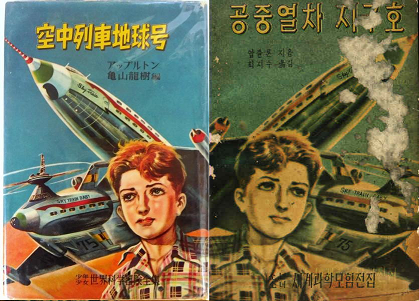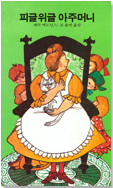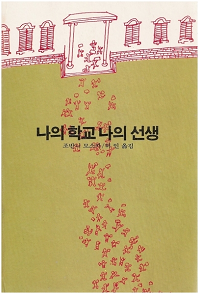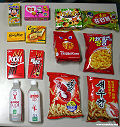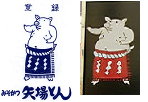What is “한우”!!?
|
 |
“한우 (Han-u)”It’s Korean beef. 2001 The sperm of the seed bull is stolen in Miyazaki in Japan. 2007 The sperm of the seed bull is stolen in Miyazaki in Japan. 2009 The sperm of the seed bull is stolen in Nagasaki in Japan. If you check the gene, you can know the facts, but Japanese Government does not do that. On the contrary, the government abolished “the examination section of breeding stock” of “National Livestock Breeding Center” that checked the gene. In 2010 Korean beef “한우 (Han-u)” started to be sold for the first time. They say it is hardly different from Japanese beef “和牛”. |
みはや (Mihaya) and あすみ (Asumi)(registered in 2014)

|
Korean mandarin orange without permission (2018) - Jeju Island, Korea | |
|
The mandarin oranges made in this Korean island are mostly the kinds that flew out from Japan.
Furthermore, some kinds are without permission. They can do as they please.
The new kind “Mihaya” has been produced without permission. It was registered in Japan in 2014. This time the Japanese side stopped it. The shipment of the mandarin orange without permission was stopped. This shipment stop happened also in the Korean farmhouses that produced “Asumi” without permission. “Asumi” is the kind that Japan took 22 years for its development. This is because the Japan’s National Agriculture and Food Research Organization (NARO) that developed the kind applied for the registration to the Korean government in January, 2018. Until now Shine Muscat and brand strawberry have been produced in Korea without permission in the same way. Japan had no choice but to let it drop. (Japan・Fuji News Network)
|
||
シャイン マスカット
|
샤인 머스캇
|
|
|
“Korean domestic products” of high-quality grape is very popular in Korea.
This is the high quality grape “Shine Muscat” that is popular in Japan too.
Koreans don’t mind a trifle. Korea is the country of “Kenchanayo(Never mind)” mind.
It has a characteristic that sweetness of mean sugar content is 19 degrees. A Japanese research organization developed it for 30 years. It is the kind Japan boasts to the world, but, in fact, this “Shine Muscat” is very popular now in Korea. “Shine Muscats” are done to a big pile in the prominent place of the fruit corner in a supermarket in Seoul, and you can know the popularity. In fact, all this “Shine Muscats” are Korean domestic products and they are made without permission of Japan. “Shine Muscats” of “the cultivation without permission” are unashamedly displayed in the shop in Kimcheon city, that is situated almost at the center of Korea and is famous for the special product of grape. Kim Jaegyeong, the manager of Agriculture and Stockbreeding section of Kimcheon city said, “In those days when Shine Muscat was developed in Japan, Japan did not register the variety in Korea. It might be a Japanese mistake.” She added that it is not illegal to cultivate Shine Muscat in Korea. Kimcheon city is backing Korean farmers up, making “Cultivation technology manual of Shine Muscats”. In fact, the National Agriculture and Food Research Organization that developed Shine Muscat in Japan carried out the registration of variety in Japan in 2006. But it did not do the registration of variety in foreign countries then because it did not imagine the export. It is an international treaty that the registration of variety of the fruits in foreign countries must be done within six years from the registration in its own country. Therefore the application time limit has already passed now. Though Korea did not bear the development cost at all, Shine Muscat is “free to produce” in Korea. The overseas outflow of the Japanese “brand fruits” is not only this. In the time of Pyeongchang Olympics, Korean strawberries that Japanese curling girls ate attracted attention. But the strawberries were made by taking seedlings from Japan without permission and crossbreeding them. It estimated the amount of loss of Japan for five years was up to 22 billion yen, because Korea exported the strawberries. The export of Shine Muscats in Kimcheon city are anticipated to be approximately 100 tons this year, too. (Japan・FNN PRIME NEWS) (November 09, 2018) How many times must Japanese be deceived by Korean? Japanene are foolishly honest and good-natured. Japanese should know the Korean national traits. |
||
Japanese Strawberries |
Korean Strawberries |
|||||||||||||
|
These are made by taking seedlings from Japan without permission
|
In the common countries this is a shameful conduct, but in Korea this is a success story. The Korean farmers who took the seedlings without permission are heroes in Korea. (“Miracle of Nonsan strawberry”, Korea・Yonhap News)
It is same as the terrorist who assassinated the Japanese Prime Minister becoming a hero.
It is same as the Korean criminal who caused the explosion in Yasukuni shrine restroom on December 10, 2015. He said he wanted to be a hero in Korea. Koreans say “The crime against Japanese is innocent (반일무죄 反日無罪)”.
Kinds of Japanese strawberry flow out into Korea
Ministry of Agriculture, Forestry and Fisheries estimates the loss is 22 billion yen in five years
(Japan・THE JAPAN AGRICULTURAL NEWS)
(June 20, 2017)
This is a success story in Korea. They say “Korea turned down Japanese request of royalty and did well”.
(Korea・Yonhap News)
(English translation) Japan・THE JAPAN AGRICULTURAL NEWSAccording to Ministry of Agriculture, Forestry and Fisheries of Japan (MAFF), 90% or more of the strawberry cultivation area in Korea cultivates strawberry developed based on Japanese kinds. “Tochiotome" that Tochigi prefecture developed and “Red pearl”, “Akihime”, etc that Japanese farmers developed were took out into Korea without any permission, and Korea crossbred them and developed the kinds called the “Solhyang”, “Mehyang” and “Kumhyang”. Their export to each Asian country is prosperous too and exceeds Japanese export. MAFF thinks that if Japanese kinds had not flowed out into Korea, Korean kinds would not have been developed and exported. MAFF calculated the amount of loss, assuming that strawberry that Japan should be able to export was replaced by products in Korea. It estimated the amount of loss of Japan for five years was up to 22 billion yen. The Japanese export of strawberry was 1,100 million yen last year. It is 5,500 million yen in five years. So the amount of loss is approximately 4 times of that. If Japanese farmers had been able to register the kinds in Korea, they would have got 1,600 million yen a year as royalty. Korea has the variety registration system, but the strawberry was out of registration until 2012, and so Japanese side was not able to register the kinds before the outflow. Because Japanese farmers could not register the kinds, they could not demand suspension of the cultivation and the disposal of Korean products. |
“Red pearl” (strawberry)
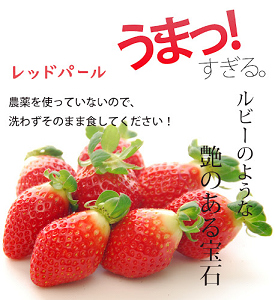
|
“Red pearl” (strawberry) stolen by Korea
 
|
|
|
About 90% of Korean strawberry are the kinds developed in Japan.
Most of them have no permission. |
||
|
Petition of the Japanese farmers 일본의 농민의 제기 |
Excuse of the Korean farmers 한국인 농가의 변명 |
|
|
Representative of Korean strawberry producer’s groups 한국 딸기 생산자 단체 대표 |
||
 “The feature of “Red pearl" is The calyx turns to the top” |
 “It is not cultivation without permission.” “무단 재배가 아닙니다.” |
|
 “Koreans make “Red pearl” without paying a royalty.” |
 “Japanese species entered from Japan naturally.” “일본으로부터 품종이 자연스럽게 들어 왔을 뿐입니다.” |
|
 “Somebody increases seedlings and gains.”  “Koreans make money by a cunning method.”  “We have been making an effort and developing good kinds・・・ I have been overcome by a feeling that I cannot explain.”  “Somebody brings the seedlings of ‘Red pearl’ in Korea and makes them.”  Stop the pirate copies of strawberry! |
 At last Japanese government was moved by the TV news.  Are 16,000 Korean strawberry farmers in a difficult situation because of royalty?  Korean government joined UPOV (International Union for the Protection of New Varieties of Plants) in 2002.
Korean farmers must pay royalty in the shipment of the strawberry of foreign seed after 2008. 85% of the strawberry which Korean farmers cultivate are Japanese kinds.  But it’s too late.・・・ September 30, 2008
Korean strawberry kinds cultivation rate overtook Japanese kinds, Royalty to pay was reduced to half. January 17, 2009 The strawberry of the Japanese kind that flowed out into Korea is reimported by Japan. October 21, 2009 Korean strawberry kinds cultivation rate overtook Japanese kinds, Always this pattern, Koreans are very clever, Japanese are very stupid, |
Brand-name rice
ひとめぼれ

“Hitomebore” is one of the kinds of the Japanese rice.
It was named as “Hitomebore” and was registered in 1991.
|
히토메보레


Rice : “Hitomebore” : 3kg (“히토메보레” is read with “Hitomebore”)
|
|
Do Koreans understand how much “cost”, “time” and “passion” are necessary for selective breeding, and the meaning of stealing them?
Sweet potato “Beniharuka”
- Distribution without permission extends in Korea, 40% of the cultivation area is for “Beniharuka”
(Japan・THE JAPAN AGRICULTURAL NEWS) (November 15, 2020)
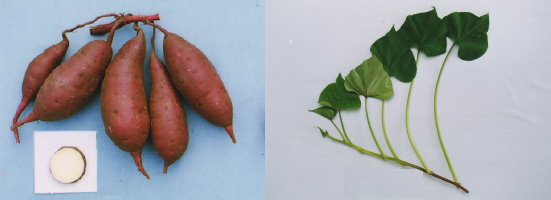
“Beniharuka” |
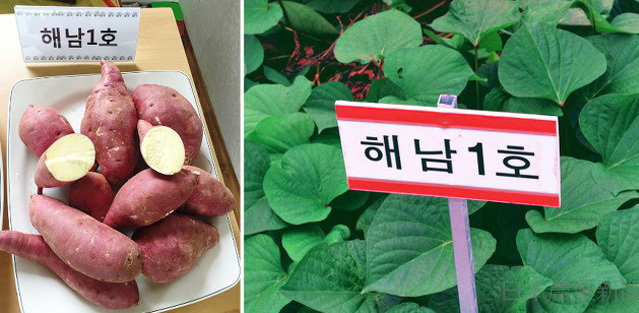
“해남 1호 (Haenam №1)” |
In Korea, Japanese sweet potato “Beniharuka” was cultivated without permission, and circulated widely. This kind already accounts for 40% of the sweet potato cultivation area in Korea.
When Korean farmers inspected a Japanese production center, some of them took a seed potato of “Beniharuka” home. That is thought to be the cause of the outflow to Korea. The cultivation began in Hainan county of Jeollanam-do in the southern part of Korea in around 2015. And in 2018, it reached 40% of the sweet potato cultivation area of Korea (20,753 hectares).
Korean “Beniharuka” costs 1, 000-2, 000 yen per 5 kilos there, and it is cheaper than Japanese products. Cultivation spread in a short term, because Korean public institution, that is, the district technology center advanced the tissue culture in the background, and it provided the cheap seedling as “Hainan 1”.
We did phone interviews to the Korean national seed center that is the organization managing the seeds about “how it supervises such a state”. The centeer answered, “The person in charge is not here now. We will reply by an email later.” However, the email does not arrive by October 14th.
- It is since old days that Korean steals Japanese farm products. Mihaya and Asumi (Japanese mandarin orange), Shine Muscat, Tochiotome and Red pearl and Akihime (Japanese Strawberries), Hitomebore (Japanese rice), Wagyu etc.. Koreans always study Japanese things and aim them. (Pirated Version of Agricultural products)
- Even if you drop your wallet in Japan, it comes back in most cases, but in other words, Japanese are foolishly honest and good-natured.










